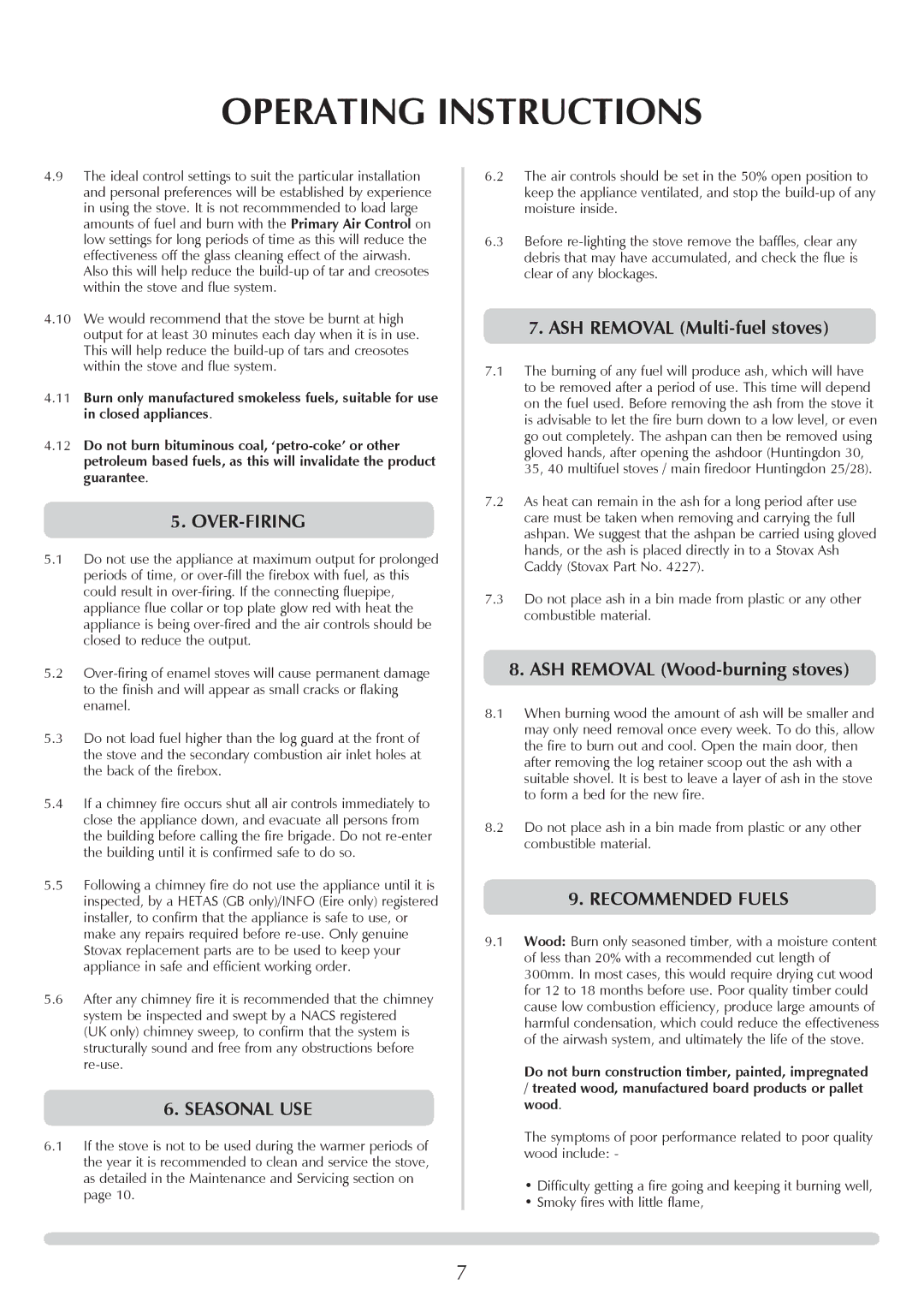7064, 7061Bl, 7063, 7054, 7069 specifications
Stovax is a renowned brand in the world of contemporary heating solutions, specializing in various wood-burning stoves and multi-fuel appliances. Among their impressive offerings, the Stovax 7061, 7058lG, 7058, 7075Bl, and 7064 stand out because of their blend of modern design, advanced technologies, and efficient performance.The Stovax 7061 features a sleek design that combines elegance with functionality. It comes equipped with a powerful airwash system, which keeps the glass clean and offers an unobstructed view of the fire. This model emphasizes energy efficiency, burning logs effectively while producing minimal emissions.
In contrast, the Stovax 7058lG is distinct for its large glass panel, allowing for an impressive view of the flames. This model utilizes Stovax's unique cleanburn technology, which enhances combustion efficiency and reduces smoke emissions. Additionally, it has a sophisticated heat retention system, ensuring warmth is radiated evenly for longer periods even after the fire has died down.
The Stovax 7058 shares similar attributes with the 7058lG but comes with a more compact design, making it a perfect choice for smaller spaces. It features a robust build, ensuring longevity and practicality while maintaining a modern aesthetic. The combination of its efficiency and stylish design makes it a popular choice for eco-conscious homeowners.
For those looking for an even bolder design, the Stovax 7075Bl offers a contemporary look that makes it a centerpiece in any room. Its high efficiency and low emissions are a result of advanced combustion engineering. This model has a multi-fuel capability, providing flexibility for users, whether they prefer logs or other solid fuels.
Finally, the Stovax 7064 model takes a step further with its high-output heating capacity. It is engineered to provide consistent warmth throughout larger spaces while maintaining an eco-friendly operation. The unique triple combustion system ensures thorough burning of fuels, maximizing heat while reducing waste.
Collectively, these Stovax models highlight the company’s commitment to innovative heating solutions that do not compromise on style or efficiency. They are ideal for modern living spaces, marrying aesthetics with advanced technologies, making them excellent investments for environmentally conscious consumers seeking effective home heating solutions.

